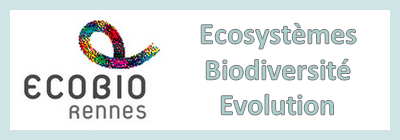An integrated approach to determine interactive genotoxic and global gene expression effects of multiwalled carbon nanotubes (MWCNTs) and benzo[a]pyrene (BaP) on marine mussels: evidence of reverse ‘Trojan Horse’ effects
Résumé
The interactions between carbon-based engineered nanoparticles (ENPs) and organic pollutants might enhance the uptake of contaminants into biota. The present integrated study aimed to assess this potential ‘Trojan Horse’, probing the interactive effects of purpose-made multi-walled carbon nanotubes (MWCNTs), a representative ENP, and benzo[a]pyrene (BaP), a ubiquitous polycyclic aromatic hydrocarbon (PAH) pollutant, on the marine mussel Mytilus galloprovincialis. Mussels were exposed to MWCNTs and BaP either alone or in various combinations. The co-exposure of BaP with MWCNTs revealed that the presence of MWCNTs enhanced the aqueous concentrations of BaP, thereby reducing the uptake of this pollutant by mussels as evidenced by lowering BaP concentrations in the tissues. Determination of DNA damage (comet assay) showed a concentration-dependent response for BaP alone which was absent when MWCNTs were present. Global gene expression using microarray analyses indicated that BaP and MWCNTs, in combination, differentially activated those genes which are involved in DNA metabolism compared to the exposures of BaP or MWCNTs alone, and the gene expression response was tissue-specific. Mechanisms to explain these results are discussed and relate primarily to the adsorption of BaP on MWCNTs, mediated potentially by van der Waals interactions. The use of a novel approach based on gold-labeled MWCNTs to track their uptake in tissues improved the traceability of nanotubes in biological samples. Overall, our results did not indicate the ‘Trojan Horse’ effects following co-exposure to the contaminants and clearly showed that the adsorption of BaP to MWCNTs modified the uptake of the pollutant in marine mussels.
